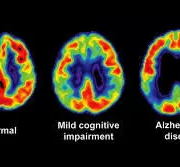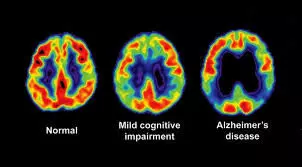
People who have been taking antidepressants for more than two years are substantially more likely to experience withdrawal symptoms compared to short-term users when they come off the medication, finds a new study led by UCL researchers.
Long-term users also tend to experience worse withdrawal symptoms, and for a longer period of time, than short-term users, and are less likely to be able to stop taking the drug when they attempt to do so, according to the findings published in Psychiatry Research.
The study’s lead author Dr Mark Horowitz, visiting clinical researcher at UCL Division of Psychiatry, said: “Our findings confirm what many researchers have long suspected, that the likelihood of experiencing withdrawal symptoms when coming off antidepressants is largely determined by duration of use.
“While coming off antidepressants can be easier for people who have only taken them for a short period of time, these drugs are commonly used for a long time. Half of those in the UK who take antidepressants have taken the medication for at least a year, and the majority of US antidepressants users have been taking them for over two years.”
The study was based on survey responses from 310 participants in England, who had been accessing NHS primary care therapy services, and who had at one point attempted to stop taking their prescribed antidepressant. Most participants – 62% – reported that antidepressants had been helpful to them.
Respondents were asked about an extensive list of potential withdrawal symptoms, and self-reported whether the symptoms were mild, moderate, or severe. Across the whole group, 79% reported at least one withdrawal symptom and 45% experienced symptoms they classified as moderate or severe (30% and 15%, respectively).
Across the entire group, 38% said they were unable to stop antidepressants when they tried to do so, rising to 79% among people who had been taking antidepressants for two years or more.
As some withdrawal symptoms (such as anxiety, worsened mood, agitation and fatigue) overlap with depression and anxiety symptoms and may represent relapse, the researchers also separated those out to find that 76% of respondents experienced at least one non-emotional withdrawal symptom such as dizziness, headache, vertigo, or nausea, while 43% experienced four or more non-emotional symptoms.
In analysis conducted by researchers in the UCL Division of Psychology & Language Sciences, the team found that how long someone had been on an antidepressant was the major determining factor for incidence, severity, and duration of withdrawal effects, and whether someone was able to stop taking the medication. The differences between short-term and long-term users were not explained by the severity of the underlying depression or anxiety disorder.
The researchers found that the odds of experiencing any withdrawal effects were 10 times greater for those who had been on antidepressants for more than two years, compared to those who had been taking them for less than six months.
Among people who had been taking antidepressants for two years of more, 64% reported moderate or severe withdrawal effects (25% reported severe effects), while among those who had been taking the medication for six months or less, the majority (73%) reported either no withdrawal effects or only mild symptoms, with only 7% experiencing severe withdrawal symptoms.
For long-term users, 30% reported withdrawal symptoms lasting more than three months, with 12% experiencing such symptoms for more than a year, while only 10.5% of short-term users experienced withdrawal symptoms for more than three months. For most short-term users, withdrawal symptoms resolved in under four weeks.
Dr Horowitz said: “This is one reason to use antidepressants for no longer than necessary – because doing so may make it harder to stop using them later on.”
The researchers say that one limitation of the study is that the survey response rate was less than one in five (18%). Respondents may have been more motivated to answer the survey if they experienced withdrawal symptoms, although the survey was not solely focused on withdrawal.
While the researchers asked whether people had been easing themselves off antidepressants slowly with a tapering technique, or quitting all at once, the results were inconclusive as not enough participants had been tapering for more than four weeks. The researchers say that as other studies have suggested that tapering is beneficial, further research is needed into how best to taper from antidepressants, and how it can mitigate withdrawal symptoms.
Senior author Professor Joanna Moncrieff (UCL Division of Psychiatry) said: “Withdrawal symptoms are commonly experienced by people coming off antidepressants, so we would advise that people who want to stop taking the medication should do so in consultation with an informed health professional.”
Reference:
Mark A. Horowitz, Joshua E.J. Buckman, Rob Saunders, Elisa Aguirre, James Davies, Joanna Moncrieff, Antidepressants withdrawal effects and duration of use: a survey of patients enrolled in primary care psychotherapy services, Psychiatry Research, 2025, https://doi.org/10.1016/j.psychres.2025.116497.














